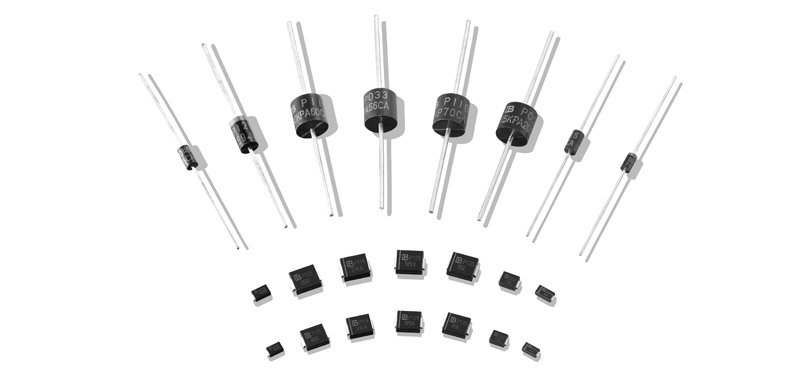

TVS diodes, also known as transient suppression diodes, are a popular new type of high-efficiency circuit protection device that has extremely fast response time (sub-nanoseconds) and high surge absorption capability. In this article, we mainly look at the classification and characteristics of TVS diodes.
Tvs diode classification:
TVS devices can be categorized into two types, unipolar and bipolar, depending on the polarity. They can be divided into general-purpose devices suitable for various circuits and special-purpose devices suitable for special circuits. Such as: all kinds of AC voltage protectors, 4 ~ 200mA current environmental protection devices, data line protectors, coaxial cable protectors, telephone protection devices. According to the package and internal structure can be divided into: axial lead diode, dual inline TVS array (for multi-wire protection), patch type, component type and high power module type.
TVS diode features:
1. Add the TVS diode to the signal and power line to prevent the failure of the microprocessor or the microcontroller due to momentary surges, such as the electrostatic discharge effect, the surge of the AC power supply, and the noise of the switching power supply.
2. The electrostatic discharge effect can release pulses of more than 10000V and 60A, and can last for 10ms. In general, TTL devices that encounter more than 30ms of 10V pulses will lead to damage. With TVS diodes, pulses that can cause damage to the device can be effectively absorbed, and crosstalk caused by switching between buses can be eliminated.
3. Place the TVS diode between the signal line and ground to avoid unnecessary noise impact on the data and control bus.




